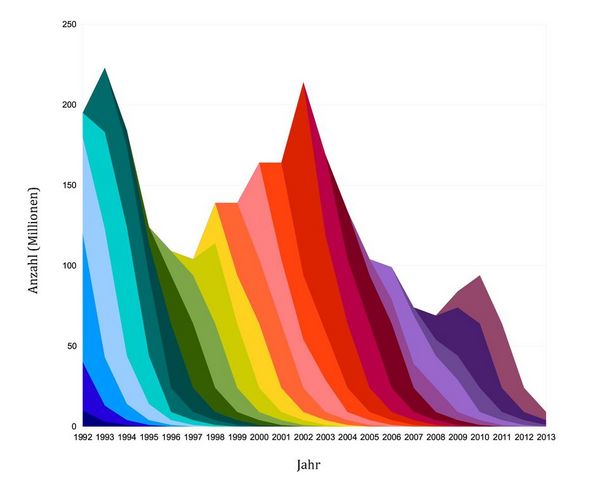Modelling and stock size estimation
Population models are our most important tool to estimate the status of commercially used fish stocks and to forecast future developments.
Every year the International Council for the Exploration of the Sea (ICES) estimates the current stock status for each commercially used fish stock of the Baltic Sea, and uses the results to derive catch forecasts for the next year, which in turn provide the basis for the catch quotas. To do this, each year we have to answer the question of how many fish of which age lived in a given sea area last year. How many will survive until next year, how many young fish will grow into the fished stock? And how much will they grow until then? Since we cannot measure these parameters directly, population models are essential to estimate the catch forecasts.
The Baltic Sea contains a rather simply structured ecosystem with few species. In the central Baltic Sea there are narrow trophic interactions between cod preying upon herring and sprat, which in turn feed on cod eggs. Thus, the targeted use of one species by the fisheries has indirect consequences on other species – both positive and negative. We support the development of multi-species models which provide important supplementary information for the single-species approach used in the present stock assessment.
Only the catches of one out of five commercially used Baltic flatfish species – the plaice - is currently regulated by a catch quota. The catches and discards of species like flounder and dab are not regulated, mainly due the lack of important input data required for stock assessment. But not even for plaice can an age-based population model be used. in the Eastern Baltic To be able to better assess the status of the Baltic flatfish stocks, we closely cooperate with our partners (e.g., in Denmark, Sweden and Poland) to advance the flatfish stock assessment models.
The size and the variability of fish stocks are adapted to the ecosystem they live in. So-called “reference points” describe important threshold value within the known fluctuations in stock size. They influence our perception of the status of fish stocks and are important target values and critical values upon which management decisions are taken. The estimation and interpretation of reference points is often highly disputed. We are involved in the estimation and critical evaluation of reference points of fish stocks in the Baltic Sea within the scope of our contribution to several working groups of the International Council for the Exploration of the Sea (ICES).

![[Translate to English:] [Translate to English:]](/media/_processed_/d/7/csm_Startseite-OF_03_c0dfd6e750.png)
![[Translate to English:] [Translate to English:]](/media/_processed_/a/3/csm_20181116-151457-Stella-Jerome-Fischfalle-Warnem%C3%BCnde-Dorsche-im-Netzk%C3%A4fig-5691_heller_3050c72fa2.png)






